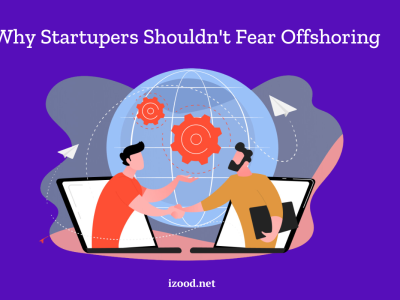
If you own a business, you might be wondering how to trademark a name for your business. There are several options to choose from, and you can choose between free or paid services. The costs associated with registering a trademark are relatively low, but the process can be time-consuming. You can avoid paying any fees until you obtain your trademark. Here are some tips to help you prepare your application.

There are three options to file a trademark. There are free and paid services, which may not be right for your business.$500 to $2000. For larger businesses, a free service might be more cost-effective.
Once you have filed your application, you need to decide which class to register your trademark in. If you want to register your name as a tradename, you should consider applying for a registration in the right class. For example, a spirits brewing company might file their application under the spirits and beverages classes. You can also opt to file under the TEAS standard, which does not require any description, and for free. If you want to trademark a name for your business, you need to take a few steps. The first step is to create an LLC. Once you’ve created an LLC, you need to trademark the company name. Before you do this, you must search the federal database, also known as TESS. Then, you need to check whether other businesses have the same or similar names. If there are too many, your application may be denied. After you have registered your trademark, you’ll need to protect against infringement by ensuring that no one else can use it. In addition to protecting your name, you can also protect your logo. Using a trademark can prevent other companies from copying it and using it in their products. However, a good company logo is a must for a successful business. You’ll need to make sure that your business name is unique to avoid confusion. The process is not as easy as filing an LLC.
What Is a Trademark?
A trademark is a word, symbol, or device that distinguishes your product from other products in the same category. These can range from food to clothing, magazines to music. Essentially, a trademark protects your business by making it difficult for other companies to copy your brand. If you want to ensure your business is protected from copycats, you should learn more about what a trademark is and how it works.

A trademark is an exclusive right to use a word, symbol, or design to distinguish a product from its competitors. It must be in use to register a trademark, unlike a patent, which will expire after five years. A trademark must be registered with the U.S. Patent and Trademark Office, which will be protected in perpetuity. A trademark can help protect a logo from imitation. There are many advantages to a trademark especially Once a brand is established. A business can’t afford to be branded without a trademark. Your trademark is the key to your success.
There are many reasons to use a trademark on your products or services. A trademark gives your company the legal protection it needs to be recognized as a legitimate business. It also lends credibility to your business name. If you have ever seen a product or service with a logo but doesn’t have a trademark, you’ve probably seen it used by a competitor. Using a registered trademark will help you establish your company’s credibility. Another reason to use a trademark is to establish exclusive rights. A trademark will not give you exclusive rights over generic terms. If your brand is Apple, you’ll need a registered trademark for “iPad” and “iPhone.” These terms are not legally distinguishable. As with any other form of intellectual property, your trademark should be registered at the federal level. Unregistered trademarks are subject to infringement, so make sure you file for federal registration of your brand. Otherwise, you won’t have the legal protection needed to fight off a competitor’s copyright.

Moreover, you will have to start from scratch with your branding. This is a huge financial setback and a lot of hard work. Having a trademark makes your brand more visible. It allows customers to recognize your brand, which helps create a brand reputation. Furthermore, a well-known trademark will help you create a positive image of your brand. For example, the McDonald’s logo is so well-known that consumers everywhere can recognize its product even without a sign. This means that people who see it will have no choice but to choose that particular brand. A trademark also grants a business the exclusive right to sell certain goods and services. A trademark does not grant rights to general words. It only gives rights to specific goods.
If you’re a startup company, you should consider using a trademark as it can boost your business’s value and draw more consumers. It also gives your business credibility because it’s a registered brand and a nationwide priority. If your name doesn’t have a registered trademark, you may risk attracting competitors’ customers. However, this doesn’t have to be the case. You can get started with a simple logo. Another benefit of using a trademark is that it is inexpensive to register. You only have to pay a small fee for the preliminary search, and you only need to pay minimal fees at registration. If you’re selling goods, you’ll only need to renew your trademark every 10 months, so you can expect to pay low maintenance costs. You’ll also be able to reach a larger audience if you register your trademark. A trademark will give you a nationwide priority. Unregistered trademarks can only be used in a specific geographical region, whereas a trademark will protect you from using your name and logo nationwide.
Also Read: “How to Transfer Domain to GoDaddy“
What a Trademark Does for Your Business?
What a Trademark Does for Your Business is a crucial step in promoting your products and services. A trademark protects your business from infringement by preventing others from using your brand name, slogan, or product images. It helps you stand out from your competitors. A registered trademark also prevents counterfeiters and imitators from confusing and stealing your customers. The registration of a trademark gives you legal protection against these risks.

A trademark application requires a significant amount of time and effort. Your name must be used in the application. The name must be included in a standard character mark. but no worries because a lawyer will help you fill out the application form and ensure that you do not make any mistakes.It helps consumers identify your company and its products and services. It also proves ownership. A trademark can help you attract investors. It will also protect your brand name and encourage others to purchase your products and services.
How to trademark a name for business?
Now you should know how to trademark a business name. If you’re unsure how to trademark a brand name, you’re not alone. Many entrepreneurs are wondering how to get their names protected. To trademark your business name, you must complete a form with specific information regarding your product or service. It’s important that the name be unique and not already used by another company. It’s also important to know that the trademark process is complicated, but it’s not impossible.
The process involves filing an application with the USPTO. The first step is to determine whether your business name is available for trademark registration. You can either use a standard character or special form drawing. The former requires words only, while the latter can incorporate design elements. You can check this by checking the USPTO’s database. Once you’ve determined the list of products and services, you can proceed to the next step: registering your trademark.There are two primary methods to trademark a name. First, you can choose a fanciful or generic name. This is the simplest way to trademark a name. This is a term that you may not have heard of before, and it will be hard to distinguish from other products. Second, you can also choose a certification mark that says the manufacturer has passed certain standards. For example, a certified brand means that the manufacturer has met a set of standards, and the logo is not just a generic, but a legitimate one. The next step in trademarking a business name is to research the availability of other trademarked names. You can check if any other company or corporation has the same name or has used a similar one.
How much does it cost to trademark a name?
after you’ve decided whether to have a trademark, you should know how much does it cost to trademark a name. do you know how much to trademark a name? The fee for filing a trademark varies depending on which level you need to file. A small business can expect to pay no more than $200 to register a brand name. A sole proprietor or contractor can expect to pay between $50 and $150 for the filing process. It is also possible to use electronic filing, which saves time and money. However, you must be aware of the legal costs that will apply to you.

There are three levels of filing a trademark. A basic fee is around $225 to $600 for a federal trademark. However, if you only need a single trademark, you should use a paper application. This will cost you between $150 and $300 per class. It is worth noting that the USPTO charges trademark fees on a “per-class” basis, meaning the more classes you file, the more expensive your trademark application will be. if you still don’t know how much is it to trademark a name for your business, consult your attorney.
How to trademark a name for free?
If you wonder how to trademark a name for free, ready carefully.
Trademark registration is a legal and time-consuming process, but it’s also completely free of charge. Many companies are willing to do this service for you, and you can even register a name that you’re using without paying a single dime. The application process is very simple, though; all you need to do is fill out the required form and submit it to the USPTO. Then, you can track the status of your application in the USPTO’s system. Once your application is accepted, you’ll be assigned an attorney who will review it. You’ll be notified by letter either to confirm the registration or to reject it. If you’re denied trademark protection, you can appeal the decision.

If you’re a sole proprietor or a contractor, filing a trademark with the state will cost you the least money.
What Are the Common Reasons a Trademark Is Rejected?
The most common reason a trademark is rejected is the possibility of confusion. The USPTO will not register a trademark if it has little to no secondary meaning for consumers. The USPTO will reject a registered trademark if it has an unavoidable chance of confusion. Fortunately, there are some ways to avoid rejection. These tips will help you save time and money.

First, a trademark must be distinctive. The consumer should be able to recognize the mark by looking at it. Apple makes electronic products, so a brand name that includes the word “apple” may be confusing. In this case, the applicant must prove that his or her mark is distinctive and distinguishable from any competing mark. This is the most difficult part of the application process.
Second, a trademark cannot contain words or phrases that are generic. A trademark may not contain a generic term that represents the business activity or product. For example, a car manufacturer cannot register a brand name containing the word “car.” The public will be confused if two cafes have the same name. The trademark office will not accept a mark that contains such a word.
Another reason a trademark is rejected is that a mark is too similar. If a mark is too similar to a competitor’s, it is more likely to be rejected. If the owner of the existing mark thinks the new one will be similar, it will oppose the application. It may also be rejected if a competitor does not have an exclusive license for the mark.
still don’t know how to trademark a company name? leave a comment.







